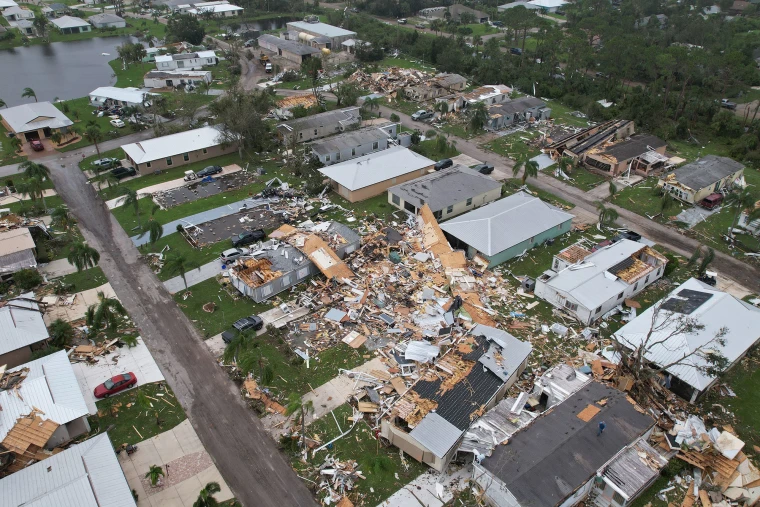As of October 10, 2024, Hurricane Milton, which had previously reached catastrophic Category 5 intensity, has now been downgraded to a post-tropical cyclone. After reaching wind speeds of 180 mph at its peak, the storm caused widespread damage as it moved through parts of the southeastern United States. Here’s everything you need to know about Hurricane Milton’s journey, the latest updates, and its ongoing effects.
Milton’s Path and Initial Impact
Milton began intensifying rapidly on October 7, 2024, reaching Category 5 status with maximum winds of 180 mph by the morning of October 9. Over the course of its path, Florida was one of the hardest-hit regions, particularly in terms of heavy rainfall and flooding. River levels rose to dangerous heights, especially in central Florida, where major flooding is expected to continue even as the storm subsides.
Downgrade to Post-Tropical Cyclone
By October 10, Milton had transitioned to a post-tropical cyclone, with winds decreasing to 70 mph. The cyclone has moved eastward into the Atlantic Ocean, currently traveling at around 18 knots (approximately 20.7 mph). Despite the downgrade, hazards persist for areas that were affected by Milton’s earlier rampage, such as coastal flooding, downed power lines, and the risk of carbon monoxide poisoning due to improper use of generators in recovery areas.
Ongoing Flooding in Florida
Although the immediate threat of Milton’s wind damage has decreased, central Florida continues to grapple with significant river flooding, particularly in urban areas. Residents are urged to remain cautious, avoid flooded areas, and prioritize safety during clean-up efforts.

Forecast and Dissipation
The storm is expected to continue its eastward movement and pass south of Bermuda within the next 24 to 36 hours. Gradual weakening of the post-tropical cyclone is expected, with global models predicting Milton’s dissipation by October 13. However, uncertainty remains about whether it will be absorbed by a frontal system or maintain some identity beyond that date.
Safety and Recovery Efforts
As Florida begins the process of recovery, authorities urge residents to stay vigilant and take precautions. If you are involved in storm damage clean-up, be cautious with power tools and drink plenty of water to avoid heat exhaustion. Additionally, ensure generators are ventilated properly to prevent carbon monoxide poisoning.
With the worst of Hurricane Milton now behind, the focus shifts to recovery. Emergency crews are addressing flooding and power outages, and weather experts continue to monitor the remnants of the storm. Despite the downgrade, Milton has left a lasting mark on Florida and the surrounding regions, and recovery will take time.
Latest Forecast Updates:
- Current wind speed: 70 mph (as of October 10, 2024)
- Movement: Eastward at 18 knots
- Maximum winds: 180 mph at peak
- Expected dissipation: October 13, 2024, with uncertainty on absorption by frontal zones
- Areas of concern: Central Florida (river flooding), coastal flooding along the southeastern U.S.
Milton’s journey from a terrifying hurricane to a weakening post-tropical cyclone serves as a reminder of the immense power of nature and the importance of preparedness in the face of such storms.






